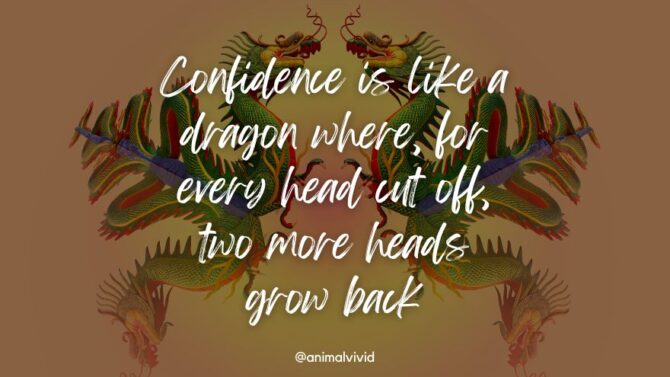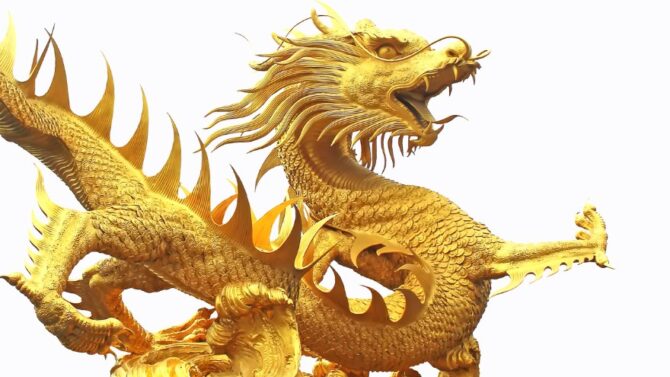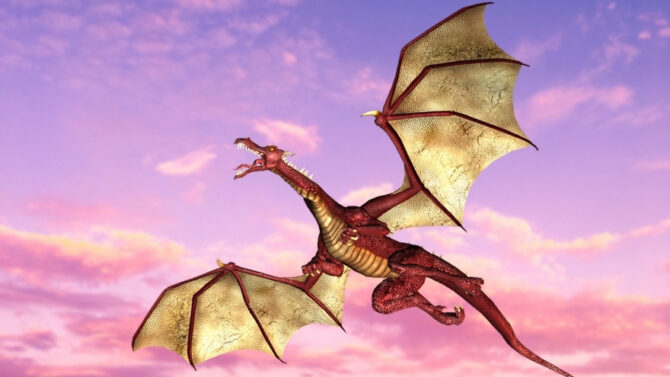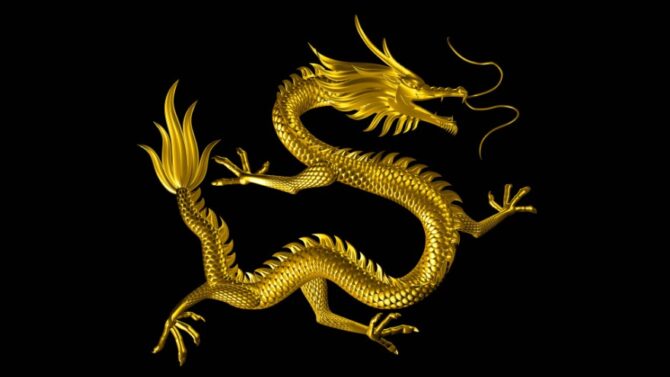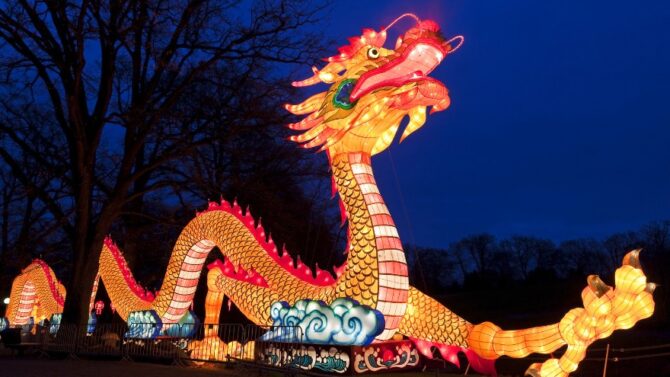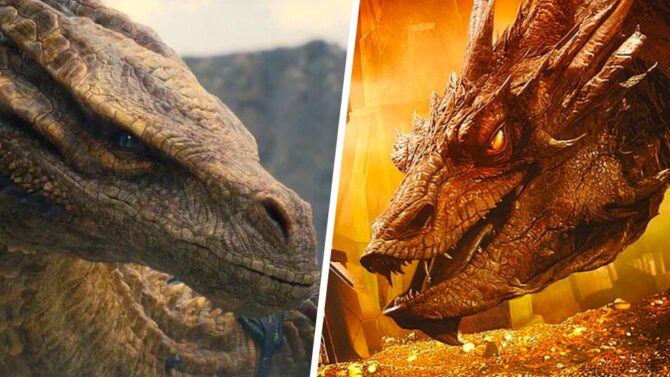Dragons are popular, and you’ve surely seen one in a movie or read about it in a story.
But did you know there are different dragon types? That’s right; there’s more to these ancient mythical creatures than what we see in modern media.
Before the advent of Harry Potter, Game of Thrones, and How to Train your Dragon, there were so many myths and legends involving dragons.
It’s hard to keep track of the dragon species as there are more than 50 and possibly even 70.
The different types of dragons include popular species like the Chinese dragon, wyvern, standard Western dragon, hydra, and druk, among others.
Let’s explore the 10 most common kinds both in ancient and modern folklore and interesting facts to know about them.
The Different Types of Dragons
1. Standard Western Dragon
For many, the standard western dragon defines what a dragon is. It is commonplace in different movies and stories.
The standard western dragon is described as four-legged, with a long tail and wide wings.
It can also breathe fire, a trait that makes it dangerous. This wasn’t how the western dragon used to be, however.
In the middle ages, it was portrayed more like a lizard than a dinosaur, with short wings that couldn’t fly.
The advent of dinosaurs changed this image into what we know now.
Standard western dragons are usually villains, symbolizing death and destruction.
Dive Deeper: Dinosaurs vs. Dragons: The Differences & Similarities
2. Chinese Dragon
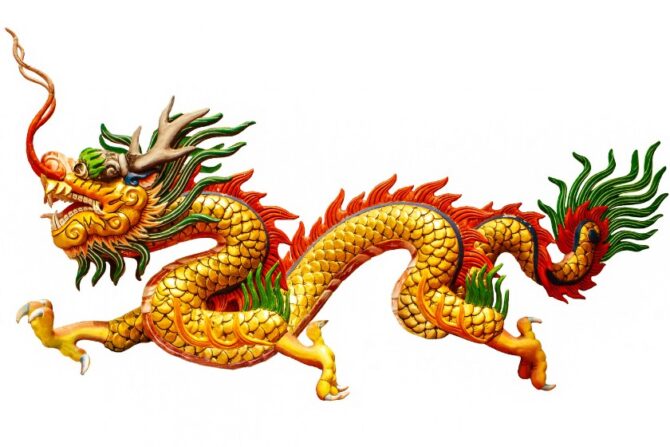
The polar opposite of western dragons, Chinese dragons are highly regarded in the culture.
It has a more positive image than the western dragon, symbolizing prosperity, power, rainfall, and even wisdom.
Dragons in Chinese legends don’t burn villages; they preserve them.
Emperors of old were attached to these creatures, and they were soon seen as “sons of dragons.”
Emblems displayed dragons as a sign of both prosperity and power. Modern China no longer has emperors, but these creatures remain a part of society.
Some places are named after dragons, and this creature gets featured in festivities.
It is also one of the zodiac animals, and 2024 is the next “year of the dragon.”
3. Wyvern

The Wyvern is similar to the standard western dragon, except that it has two legs rather than four.
It is also smaller than both the Chinese and the standard western dragon.
Wyverns aren’t known to be fire breathers, but this doesn’t mean they are safe.
They have stingers at the end of the tail that can cause damage.
Wyverns have a mixed reputation. On one hand, they symbolized valor, strength, and protection.
On the other hand, wyverns also stood for vengeance and were sometimes destructive.
The unfortunate legend titled the Dragon of Mordiford shows how destructive wyverns can be.1
4. Hydra
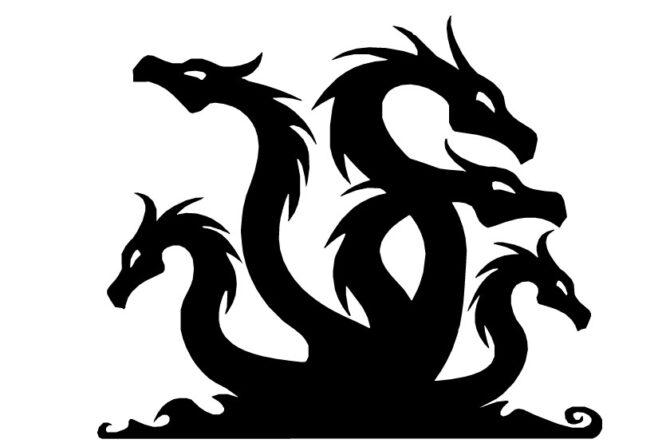
One of the scariest creatures in myths, the hydra is characterized as having multiple heads.
This trait made it hard for anyone to vanquish the hydra. When one head is cut off, another grows in its place.
Hydras also spit venom and breathe fire, a lethal combination. Its fangs and blood are also very poisonous.
According to legend, this beast was defeated by Heracles, the famous son of Zeus and Alcmene.2
This he did in collaboration with his nephew Lolaus.3 The battle between Heracles and the hydra was one of the most epics in the world of myths.
5. Druk
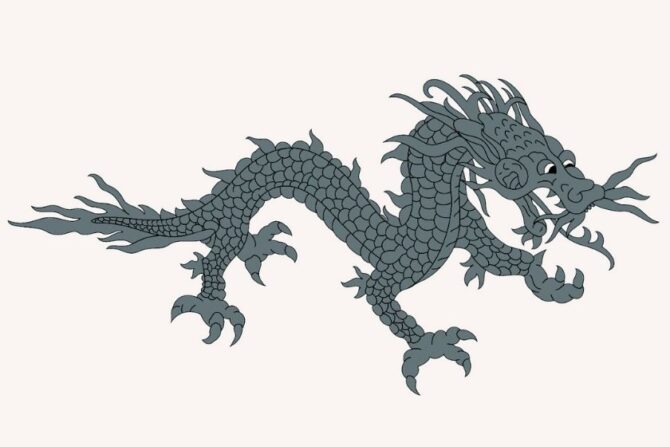
The druk isn’t as popular as the aforementioned dragons, but it deserves a place on our list. It hails from Tibetan and Bhutanese mythologies.
The druk is also called the thunder dragon, and it is highly regarded in its origin regions.
In Bhutan, for example, it is the national symbol. Leaders are called Druk Gyalpo, which means “Thunder Dragon Kings.”
Tibet also has a special spot for the druk, especially in its religious traditions.
A Buddhist sect named the Drukpa Kagyu was constructing a monastery when a thunderstorm began.
The thunder sounded like a dragon, so the founder saw this as an omen.
The monastery was named the Druk ralong while the followers were called Drukpa, which meant “those of the thunder.”
Druks are a bit similar to the Chinese, given their long, thin bodies and elusive nature.
They are depicted as wise, discerning, and solitary. Druks are hardly seen, but they are seemingly fond of thunders. They use this to signal their presence.
6. Japanese Dragon
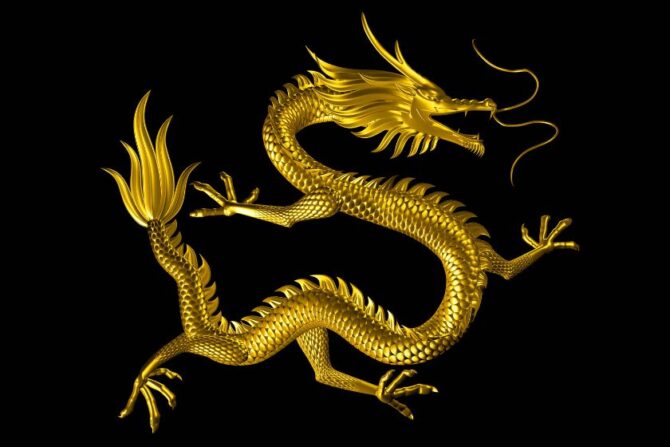
Japanese dragons owe their “existence” to Chinese, Indian, and Korean mythologies.
These were combined with local stories to construct the Japanese dragon.
Not surprisingly, it is very similar to the Chinese dragon in looks and purpose. The Japanese dragon is serpentine, long, and wingless.
The difference between them and the standard western is overt, and Japanese folks ensure we know this.
The standard western dragon is termed doragon while the Japanese dragon is called ryū or tatsu.
Similar to other Eastern dragons, the Japanese dragon is a water creature that can control oceans and rainfall.
It can also take a human form, possibly as a disguise. An example of a popular Japanese dragon is Ryūjin, a sea god.4
7. African Dragon
The African continent has its share of these mythical creatures and dragon stories.
Though they are not as widespread as the Chinese and the western, these creatures are part of different African cultures.
A prominent example of an African dragon is Apep, also known as Apophis.5
It is the evergreen enemy of the god Ra, and for the sun to rise Ra must defeat Apep.
Another African dragon is Aido-hwedo, a rainbow serpent. It features in a creation story and is worshipped in the vodoun religion.6
The African dragon is different from both the Chinese and the standard western.
In looks, it is like a large serpent without legs or wings. It is also regarded as a deity and may be either noble or villainous.
8. Quetzalcoatl
If the name Quetzalcoatl is a tongue twister for you, you are not alone.
Fortunately, its meaning is simple: feathered serpent. This creature was featured in ancient tales, being a god amongst the Aztecs.
As a god, it could influence the weather and provide maize, assets for the agricultural population.
The Quetzalcoatl had a high reputation amongst the Aztecs, arguably more revered than the Chinese dragons.
He was considered the patron god of science, knowledge, and arts.
He was also featured in a creation story and protected craftsmen.7
9. Vishap
The Vishap hails from Armenian mythology, and it is an unusual species. It is a combination of many other animals, like the bat wings.
It is similar to the western dragon in size, but other than that, it developed independently of other mythologies.
The vishap stays close to the water and is often held responsible for eclipses and thunderstorms.
Vishaps have a mixed reputation. While they symbolize wealth, fertility, power, and water, they had dark sides.
Vishaps were mischievous and even dangerous, going as far as demanding human sacrifice.
10. Gaasyendietha
The gaasyendietha is from Seneca mythology, and at one point, it was believed to be real.
While that’s no longer the case, the gaasyendietha remains alive in legends. It was said to live in Lake Ontario, Canada.
It is often associated with the western dragon because it blows fire. An alternative name for the gaasyendietha is the “meteor dragon.”
Two legends attempt to chart the gaasyendietha’s origin. The first linked it to serpent eggs.
The second was more extravagant, claiming that the type came from space.
Wrap Up
Modern media and literature can benefit from exploring more dragon types than the standard western and Chinese species.
Works like How to Train your Dragon have made a good attempt at this, but it should be more commonplace to have a variety.
The world of myths and dragon stories is amazing, leaving a lot of uncharted territories.
References & Notes
- Dragon of Mordiford. Fandom.
- Heracles. Theoi Greek Mythology.
- Hercules’ Second Labor: the Lernean Hydra. Perseus Project.
- Ryujin. World History Encyclopedia.
- Myth. Britannica.
- Aido-Hwedo, the Cosmic Serpent. Oxford Reference.
- Quetzalcoatl. Mythopedia.

